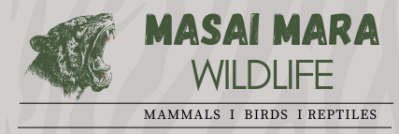Here is a table summarizing key details on the Spotted Hyena (Crocuta crocuta):
| Attribute | Details |
|---|---|
| Common Name | Spotted Hyena |
| Scientific Name | Crocuta crocuta |
| Swahili Name | Fisi madoa |
| Maasai Name | Olkonoi |
| Size | Head-Body Length: 200 cm (79 inches), Shoulder Height: 90 cm (35 inches) |
| Gestation Period | 16–17 weeks |
| Recognition | Large, muscular predator with spotted coat, sloping back, and large, round ears. |
| IUCN Status | Least Concern |
| Key Threats | – Human-wildlife conflict due to livestock predation. |
| – Habitat loss and fragmentation caused by expanding agriculture and human settlements. | |
| Conservation Actions | – Educating communities about coexistence and the ecological role of hyenas. |
| – Predator-proof enclosures (bomas) to protect livestock and reduce retaliatory killings. | |
| – Expanding protected areas and ensuring connectivity of habitats. | |
| – Monitoring and research to guide conservation strategies. |
Habits and Behavior
Activity: Hyenas are primarily nocturnal but are often active during the day in the Masai Mara. They are gregarious animals, living in clans dominated by females. Spotted Hyenas are social creatures, with clans reaching up to 50 individuals. Despite their reputation as scavengers, they are formidable hunters and often hunt in groups, pursuing prey like wildebeest, zebra, and even buffalo over long distances.
- Cooling Behavior: Hyenas are known for their habit of bathing in water pools to keep cool during the heat of the day.
Diet
- Feeding: Spotted Hyenas are opportunistic feeders, consuming everything from large insects to big game. Their powerful jaws can crush bones, allowing them to extract marrow, and they are known to consume entire carcasses, including bones and hooves. Their ability to digest bones is one of their most remarkable traits, and their specialized teeth are adapted for this.
Social Structure
- Matriarchal Society: Spotted Hyenas have a female-dominated social structure. The alpha-female leads the clan, and females are larger and more dominant than males. Females are also unique in their reproductive anatomy, which closely resembles that of males. Cubs are raised in communal dens, and the alpha-female’s offspring typically inherit dominance within the clan.
Reproduction
- Gestation and Cubs: The gestation period is around 16–17 weeks, after which the female gives birth to two dark brown cubs in a den, often repurposed from aardvark or warthog burrows. The cubs are born with their eyes open, and sibling rivalry is common, with the larger cub often bullying or even killing the weaker one. Cubs are raised by the mother and remain with the clan until they mature, with males eventually leaving to join other clans.
Habitat
- Where to Find: Spotted Hyenas inhabit savanna, open grasslands, and marshes. In the Masai Mara, they are commonly seen following migrating herds of wildebeest and zebra, as well as patrolling through herds of topi, looking for vulnerable individuals to prey on.
IUCN Conservation Status
- Status: Least Concern. The Spotted Hyena has a stable population and a wide distribution across sub-Saharan Africa, including in protected areas like the Masai Mara. However, outside of protected zones, populations face significant pressures.
Key Threats
- Human-Wildlife Conflict: One of the primary threats to Spotted Hyenas is conflict with humans. They are often perceived as threats to livestock, leading to retaliatory killings by local communities. As hyenas occasionally raid livestock, especially in areas adjacent to protected zones, they are frequently targeted by herders.
- Habitat Loss: As human populations grow and agricultural activities expand, hyenas lose their natural habitats. Fragmentation of habitats limits their access to prey and disrupts their social structures, which are essential for their survival.
Conservation in the Masai Mara
To ensure the long-term survival of Spotted Hyenas, the following strategies can be implemented:
- Reducing Human-Wildlife Conflict: Educating local communities on the importance of hyenas in the ecosystem, along with the implementation of better livestock protection measures, can help reduce conflict. Initiatives like predator-proof bomas (enclosures) and compensation schemes for livestock loss can foster coexistence between humans and hyenas.
- Habitat Protection: Ensuring that hyenas have access to large, undisturbed areas of savanna and grassland is crucial for their survival. Protected areas like the Masai Mara play a vital role in this, but extending conservation efforts beyond these areas can help preserve larger, connected ecosystems.
- Research and Monitoring: Ongoing research and monitoring of hyena populations help provide valuable data on their behavior, population trends, and health. This information can be used to inform conservation policies and improve management practices in the Masai Mara.
Conclusion
Despite their often misunderstood reputation, Spotted Hyenas are remarkable predators and play a critical role in maintaining the balance of the ecosystem in the Masai Mara. With effective conservation efforts focusing on reducing human-wildlife conflict, protecting habitats, and fostering coexistence, the future of Spotted Hyenas in the Mara can remain secure. These intelligent and social animals deserve greater appreciation and understanding, not only for their role as scavengers but also as powerful and efficient hunters.
